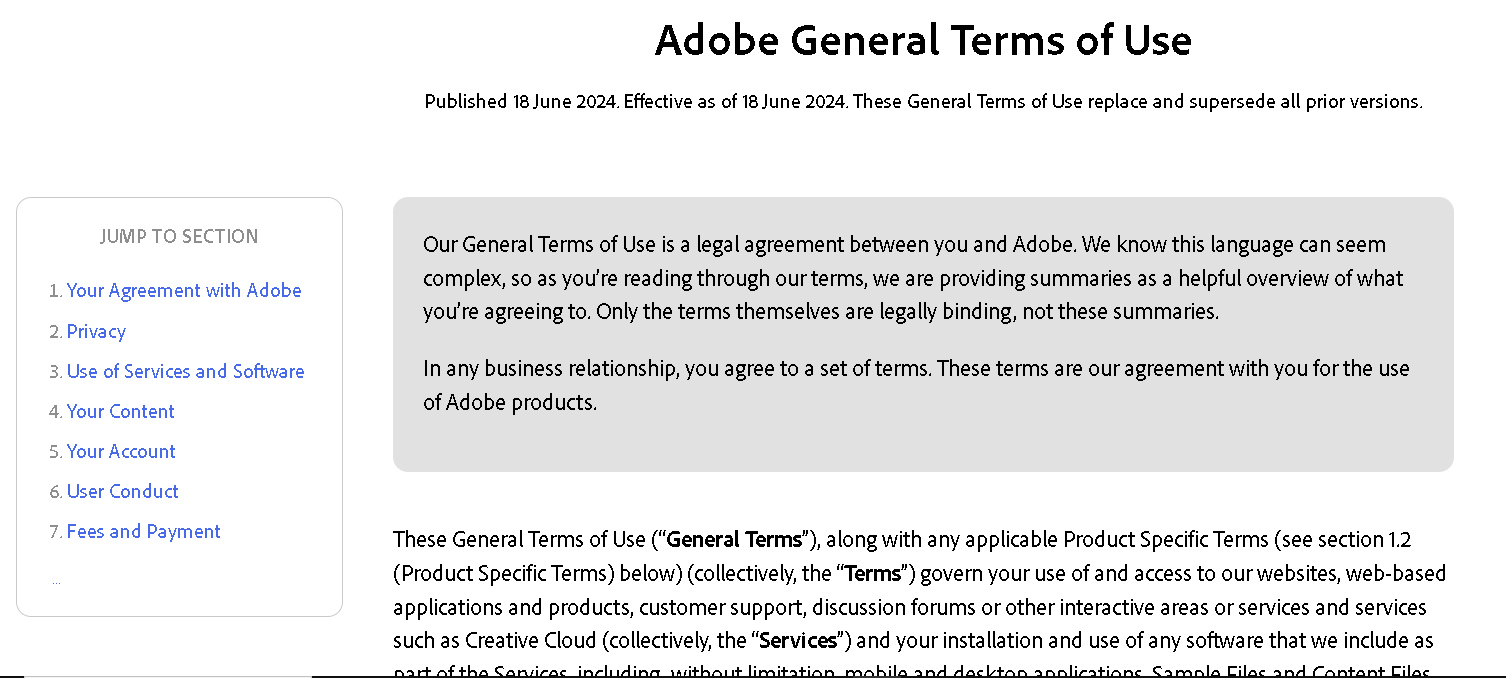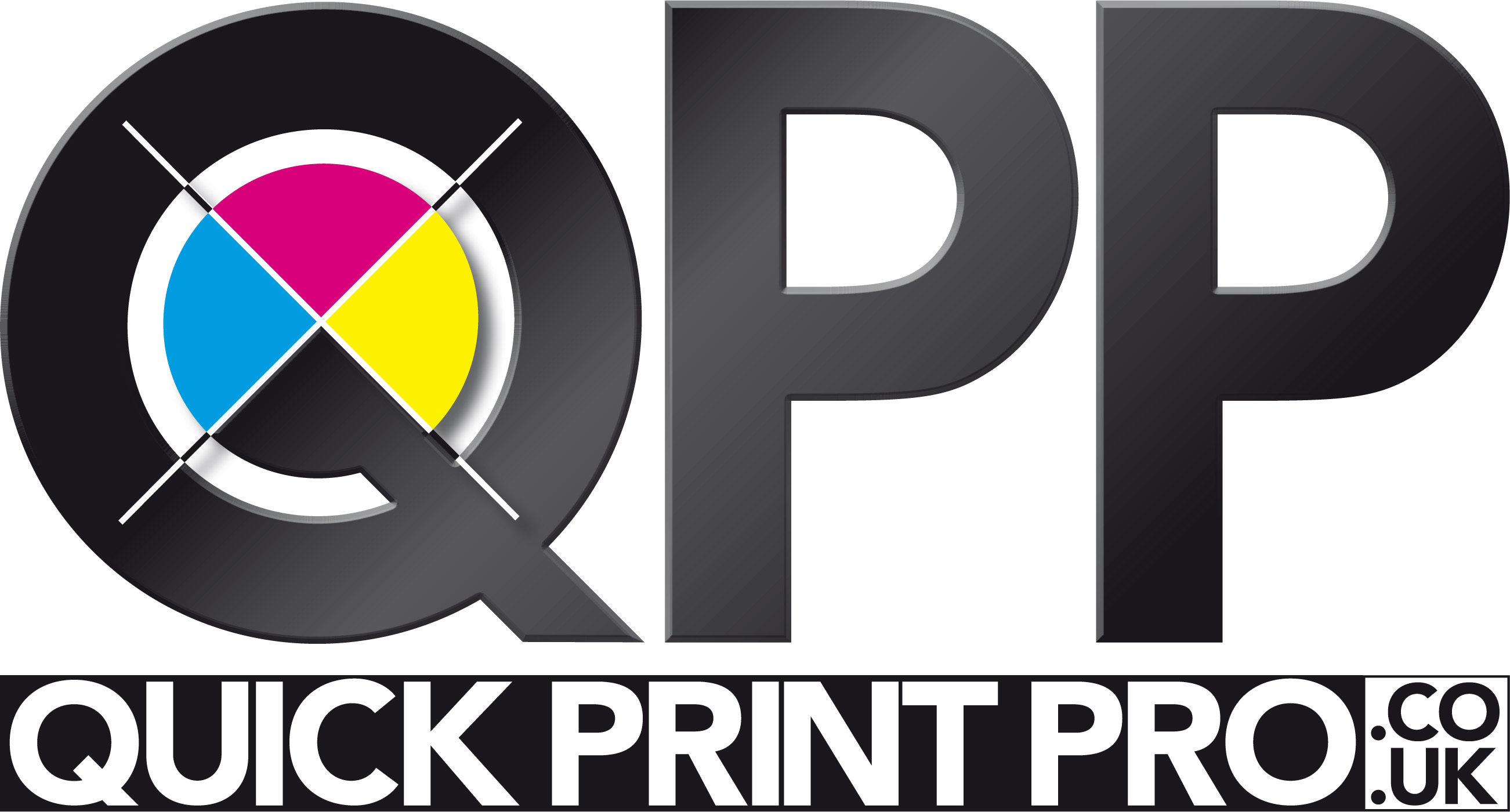Well if I believed everything social media feeds me I would expect the immediate demise of Adobe, as everyone is going to cancel their subscriptions and migrate to a cheaper alternative.
That’s if you take an interest in these things and following a particular story will attract more and even more dramatic revelations that take you deeper into a black hole of scandal and conspiracy.
At the centre of it is the content of Adobe’s Terms of Service, recently updated, and including some ambiguous clauses which when studied closely, led many to conclude that agreeing to them would remove any personal rights to content which would be passed on to the company to use as they wished.
Terms and Conditions of course are those things we are all familiar with but never really read very closely as they are usually guarded in such legal phrases that make them almost unintelligible, and are therefore capable of being translated into any meaning the reader choses.

That’s nothing new as any company that sells a product or service to us tries to cover its liabilities, as well as anticipate any possible consequences of the exchange.
That’s been taken to a whole new level with the transmission of personal images and information on the internet, and questions over who owns any right to it when it’s in a public domain, or shared in any social medium. The issue has been raised with almost every other platform like Facebook and Twitter - wherever there is an exchange of content and service. If these companies provide us with a product that benefits us, what do they expect in return?
Of course, many of those sensational strap lines attacking Adobe are designed as much as to draw visitors rather than add any clarity to the stories. And as that itself can be a revenue source for the user, it’s a bit rich of the creator to accuse someone else of being mercenary.
Adobe were quick to make some clarifications to the terms, aware of the danger of fake news in the era of social media and the practical fact that most people only skim the headlines and skip the details. Having read and listened to the arguments and both sides, I would say there are still some grey areas, and while this column has predominantly covered Adobe products I have always stressed that other software was available. It’s all a matter of weighing up the pros and cons in a commercial decision.
In the IT era many companies have come and gone. Often they begin with small, enthusiastic start-ups and then are often launched into unexpected prominence when factors turn to their favour, but equally their rise to dominance can be its downfall as the talent required to launch them is not the management skill required to control a large company. All empires contain the seeds of their own destruction. They become too unwieldy, too complacent and confident of their own power and control until they fall apart at the edges. Historically this could take decades or even centuries, but in the modern world this can happen very quickly.
I had an interesting insight in a meet up with a long term friend of forty years whose background was in the human interface with machine intelligence. She left these shores for America to work for Yahoo (remember them) which for a while was dominant in early incarnations of what we now call social media. Head hunted by Google she had risen to quite a senior and respected position to the extent that she spent some time explaining the developing technologies to companies worldwide, including, as it turned out, Adobe. Over a beer in a Brighton bar it was ironic that we had reached a similar opinion, as I started out as a photographer, very much as a digital luddite, but was forced to become a part of the changes as my analogue world was consigned to the scrap heap. As we chatted it was increasingly clear she was determined to move on to new challenges away from the deceptive comfort zone of a global giant, and that has since come to pass, and it’s Google that will be the weaker for that loss of talent.
One of the more telling comments she made about Adobe, given her background, was that the software was not very human friendly and that more needed to be done to make it accessible to people with less experience rather than assuming a certain skill level and competence. Despite claims that you don’t need any technical training to use the latest AI tools, as I keep repeating in this column, unless you know what they are doing they can be a complete waste of time.
Photoshop has become too fat and full of toys, many of which are never used, but Adobe has never been able to slim down the workspace because of the continuity of users over more than two decades. The familiarity with a product that hasn’t changed much on the surface in all this time is one of the main reasons for sticking with it, rather than starting again with something new and unfamiliar.
The problem is that so many features have been added on and it's very difficult to work out where they all are and what they do. It’s like a toolbox where the tools have grown too big, and too numerous to fit in the box. But as I have also argued, by the same analogy, unless you know how the basic tools work, and how you use them, you can’t just leap onto the more complicated ones.
Adobe’s critics would claim there’s a more sinister agenda behind recent developments, but it’s more likely to be marketing pressure to combat other AI companies - some large, and some that might become large overnight - who are exploiting the sales potential of the new golden child. It was always the policy of big companies to acquire or suppress smaller companies that showed promise or were a threat. Adobe has done this to its advantage over the years.
Critics have accused it of empire building since the software went onto one line subscription many years ago. But while that did give it some direct control over its users, it did give the subscriber the benefit of updates, including the solving of inevitable bugs which were the bane of our previous primitive existence. Only older users will know the pain of having to find the original installation disc and spending hours getting it to install.
This is the issue with some single purchase standalone alternatives that may be much cheaper and easier to use. While they may suit the occasional private user, for a business in daily use having to buy regular updates or search for problem solving is not convenient when Adobe does most of it for you automatically. And if that doesn’t fix it, with 25 million professional users worldwide, there’s a good chance someone will have found and sorted the problem before you.
One company making bold inroads into Adobe’s dominance is Canva, which has at least four times the number of users at current estimates and is only likely to grow. You will all be familiar with Canva as customers have been using it as the design software of choice for the mobile lifestyle. Most users take advantage of the free option and a much smaller number opt for the much better paid one. This is a well thought out and developed programme designed for ease of use by the non specialists, but as a result is limited in scope.
Earlier this year Canva swooped on Affinity, a UK based software firm, with a tenth of Canva’s customer base, but a much broader potential in professional software for photography, graphics and design - a direct competitor in effect to a good slice of Adobe’s Creative Cloud package. If you are looking to trim your monthly spending, this may be a good place to start shopping, as one of the fair criticisms of the Adobe suite is that you are paying for a lot of things you don’t need, and there is a limited amount of pick and mix.
Affinity Photo looks and works very similar to earlier versions of Photoshop which makes sense as they have not been trying to reinvent the wheel. In fact, if you were designing a new car, the last thing you would do is change how all the controls work. This means as a previous PS user, you won’t have any problems adapting to the workspace as you might have, for example, if you went with Corel Draw, once darling of graphic designers, and still very much alive but quite different in essential usage.
Affinity Photo does not have any of the latest AI wizardry that Adobe has been piling into its software in recent updates but that is not necessarily a disadvantage as it is still perfectly capable of doing everything needed for the print studio. One of the disadvantages of the increasing use of AI is that it demands greater computing power, and immediate memory, to perform its tasks. And just like Microsoft making more demands on the hardware with Windows 11, there is an assumption that we can all afford to keep up to date with the latest generation of high performance computers, and that we are going to rely on them to do all the difficult work. In fact rely on them to make decisions.
All of these pros and cons need to be considered if you are looking for an Adobe alternative and there are a number available if you look at your essential needs in the workplace. For photographic editing it’s not just the adjusting of exposure and colour, but the ability to work non-destructively on the original image. Affinity Photo, like Photoshop, does this using layers.
By non-destructive we mean not actually altering the original but effectively working on a copy, or several copies so that changes can be made, adjusted or discarded entirely at the discretion of the editor. In days of film, we never did anything to the original negative, only adjusted the print.
The basic principle remains.
This is an important advantage unlikely to be shared by the customer who is more likely to have trashed an original or saved it at too low a resolution so even if quality was there in the original capture, it has been lost forever. And it will need more than machine intelligence to restore or recreate it.
Adobe do have alternatives themselves in Photoshop Elements, for example, which was introduced a long time ago when some of the more cautious developers must have been worried Photoshop would get too big for its boots, and the skill of mere mortals. And then there is Lightroom, which is an easy transition for a photographer, but completely different in operation, so that’s a whole new story.
It will be interesting to see how the latest controversy pans out and whether it will herald some big changes in working with companies like Adobe which have been in such a powerful position in the industry for so many years.
martin@colourast.co.uk



.jpg)




-2025-11-19-10-50-51.jpg)





